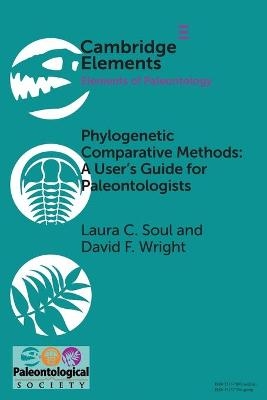
Phylogenetic Comparative Methods: A User's Guide for Paleontologists
Seiten
2021
Cambridge University Press (Verlag)
978-1-108-79468-8 (ISBN)
Cambridge University Press (Verlag)
978-1-108-79468-8 (ISBN)
Phylogenetic comparative methods (PCMs) provide paleontologists with analaytical tools for investigating evolutionary tempo and mode in fossil lineages, but integrating them with fossil data can be challenging. This Element presents guides to applying PCMs with fossil taxa as well as example analayses illustrating common applications.
Recent advances in statistical approaches called phylogenetic comparative methods (PCMs) have provided paleontologists with a powerful set of analytical tools for investigating evolutionary tempo and mode in fossil lineages. However, attempts to integrate PCMs with fossil data often present workers with practical challenges or unfamiliar literature. This Element presents guides to the theory behind and the application of PCMs with fossil taxa. Based on an empirical dataset of Paleozoic crinoids, example analyses are presented to illustrate common applications of PCMs to fossil data, including investigating patterns of correlated trait evolution and macroevolutionary models of morphological change. The authors emphasize the importance of accounting for sources of uncertainty and discuss how to evaluate model fit and adequacy. Finally, the authors discuss several promising methods for modeling heterogeneous evolutionary dynamics with fossil phylogenies. Integrating phylogeny-based approaches with the fossil record provides a rigorous, quantitative perspective on understanding key patterns in the history of life.
Recent advances in statistical approaches called phylogenetic comparative methods (PCMs) have provided paleontologists with a powerful set of analytical tools for investigating evolutionary tempo and mode in fossil lineages. However, attempts to integrate PCMs with fossil data often present workers with practical challenges or unfamiliar literature. This Element presents guides to the theory behind and the application of PCMs with fossil taxa. Based on an empirical dataset of Paleozoic crinoids, example analyses are presented to illustrate common applications of PCMs to fossil data, including investigating patterns of correlated trait evolution and macroevolutionary models of morphological change. The authors emphasize the importance of accounting for sources of uncertainty and discuss how to evaluate model fit and adequacy. Finally, the authors discuss several promising methods for modeling heterogeneous evolutionary dynamics with fossil phylogenies. Integrating phylogeny-based approaches with the fossil record provides a rigorous, quantitative perspective on understanding key patterns in the history of life.
1. Introduction; 2. Getting Started – Data and Phylogeny; 3. Phylogenetic Non-independence; 4. Tempo and Mode – Brownian Motion and More; 5. Incorporating Estimates of Error; 6. Variation Across Trees; 7. Model Fit and Model Adequacy; 8. Post-hoc Modelling of Discrete Characters; 9. Modelling Heterogeneous Trait Evolution; 10. Conclusions; References.
| Erscheinungsdatum | 17.05.2021 |
|---|---|
| Reihe/Serie | Elements of Paleontology |
| Zusatzinfo | Worked examples or Exercises |
| Verlagsort | Cambridge |
| Sprache | englisch |
| Maße | 151 x 227 mm |
| Gewicht | 108 g |
| Themenwelt | Naturwissenschaften ► Biologie ► Evolution |
| Naturwissenschaften ► Geowissenschaften ► Mineralogie / Paläontologie | |
| ISBN-10 | 1-108-79468-8 / 1108794688 |
| ISBN-13 | 978-1-108-79468-8 / 9781108794688 |
| Zustand | Neuware |
| Haben Sie eine Frage zum Produkt? |
Mehr entdecken
aus dem Bereich
aus dem Bereich
Wie die Vernichtung der Arten unser Überleben bedroht - Der …
Buch | Softcover (2023)
Penguin (Verlag)
CHF 20,95


